Ref’s butts. That’s what we spend a lot of time looking at, and cursing, when photographing basketball. Despite that, it’s always been one of my favorite sports to shoot. Nearly constant action, just ten players, only a few officials to get in the way, and you can cover the whole court from one spot with two cameras and lenses. So being tournament time, I thought I’d go through what I consider the keys, using photos I took at the tournament last week.
1 – Light – The first consideration when shooting sports is almost always how much light you’ve got. Yes, blur can be pretty occasionally, but most of the time you don’t want it. So at night, or indoors, you’re hoping for enough light to shoot at a reasonable ISO. What’s reasonable? Depends on your camera, and how much noise (image degradation) you can live with. The cameras I normally use for fast-action sports are the Nikon D3 and D4S. I think the D3 makes beautiful pictures up to 4000 ISO, and the D4S around 8000. I can shoot above that if I have to, and get very usable photos. But I prefer that to be the top end, and shoot lower when possible.

My Nikon D3 makes exceptional pictures at high ISO’s, but I don’t push it any higher than I have to. Nikon D3, Manual, ISO 3200, 1/1250 at f/2.8, Nikkor 70-200mm f/2.8 lens at 110mm. Photo copyright Reed Hoffmann, The Associated Press.
2 – Shutter Speed – How fast is fast enough? Again, it depends, but that’s based on how fast the action is. College and pro sports usually mean a minimum of 1/1000 second. Because motion blur (from moving the camera) can create problems, especially with telephoto lenses, the longer the lens I use, the faster the shutter speed I’d like to have. For basketball, I can get away with 1/500 at high school level, but college and above, 1/1000 is a minimum.
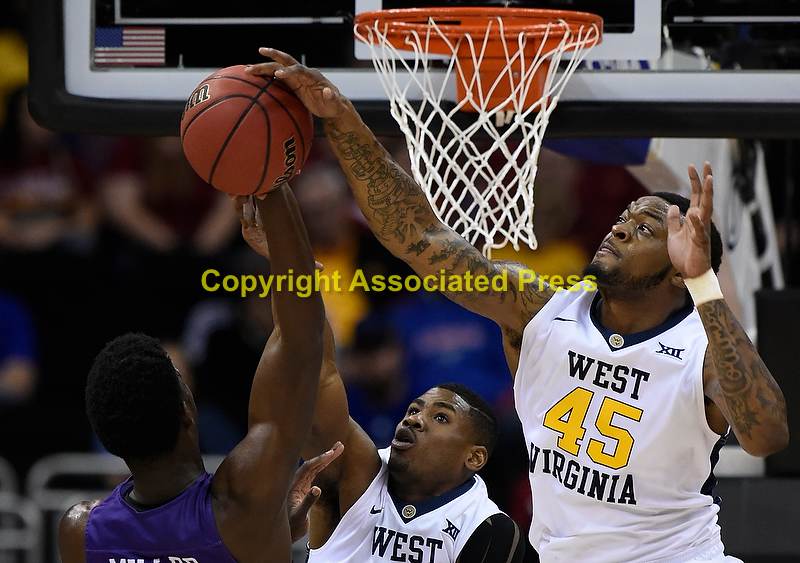
In this case I’ve added a 1.4X teleconverter to my 300mm f/2.8 lens, giving me a focal length of 420mm, so I need to shoot at an even higher shutter speed to reduce the chance of camera movement blur. Nikon D4S, Manual, ISO 5000, 1/1600 at f/4, Nikkor 300mm f/2.8 lens with TC1.4 teleconverter. Copyright Reed Hoffmann, The Associated Press.
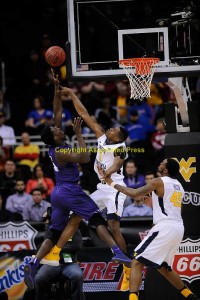
Using a 300mm lens lets you shoot action at the far end of the court.
Nikon D3, Manual, ISO 3200, 1/1600 at f/2.8, Nikkor 300mm f/2.8 lens at 300mm. Photo copyright Reed Hoffmann, The Associated Press.
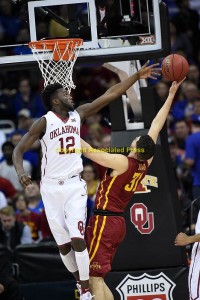
If you have enough light, you can use an even longer lens with a reduced aperture to shoot tighter action shots. Nikon D4S, Manual, ISO 5000, 1/1250 at f/4, Nikkor 300mm f/2.8 lens with TC-14 teleconverter for a focal length of 420mm. Photo copyright Reed Hoffmann, The Associated Press.
3 – Lenses – There are two keys to achieving high shutter speeds in poor light – ISO, as mentioned above, and “fast” lenses. That means lenses that have wider-than-normal apertures, which almost always means more expensive lenses. For indoor, or night sports, that means you usually want a maximum aperture of at least f/2.8. For longer lenses, like 400mm and above, that will probably mean f/4. That wider aperture can be big in a couple of ways. First, the exposure difference between f/2.8 and f/4 is a “full stop,” which means if you could shoot at 1/1000 at f/2.8 at a given ISO, you’d only be able to get 1/500 with an f/4 lens at that same ISO. And zoom lenses let you change focal length to suit the action, so sports photographers often rely on their 24-70mm f/2.8 and 70-200mm f/2.8 zooms. And for basketball, a 300mm f/2.8 really helps when shooting the far end. None of these are inexpensive lenses. For beginners, I usually recommend an 85mm f/1.8 lens. For about $400 you’ve got a lens you can make good pictures with if the action’s fairly close.
4 – Autofocus – In the days before autofocus, good sports photographers had the rare talent of being able to manually follow-focus action. Now we have incredibly accurate autofocus systems in most of our cameras. However, for fast action, you need a camera with an autofocus system designed for that. Which means entry-level cameras will be too slow. The most powerful AF systems, not surprisingly, are in the more expensive cameras. And the more light that comes into the camera, the faster that AF system can perform. Which is why you see pro sports photographers using expensive cameras and fast lenses. That fast lens doesn’t just help with fast shutter speeds. Its wide aperture allows the autofocus system to respond faster too because of the added light coming into the camera. And autofocus today is so much more than just “On” or “Off.” There are multiple modes and options, and unless you understand them, you won’t get the best results. As a Nikon shooter, I use AF-C (Continuous), Dynamic 21-point for basketball. If you want to read what I have to say about getting the most out of Nikon AF, read this story.
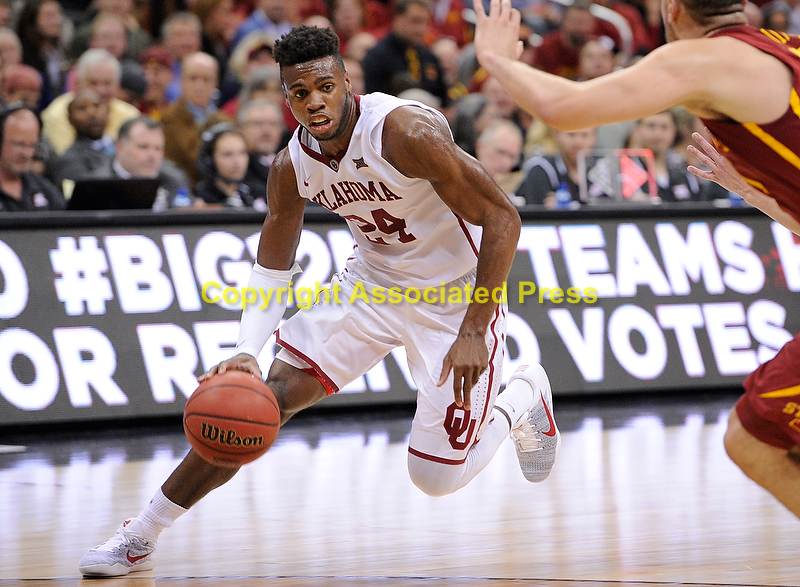
With the right autofocus system used properly, getting sharp photos of action coming right at you should be possible. Nikon D3, Manual, ISO 3200, 1/1000 at f/3.5, Nikkor 70-200mm f/2.8 lens at 190mm. Photo copyright Reed Hoffmann, The Associated Press.
5 – White Balance – I’m always amazed at how much time photographers waste trying to “fix” color when they don’t have to. If you’ve got artificial lighting (like a basketball arena), then all you need to do is create a “custom” white balance setting for that (what Nikon calls a “White Balance Preset”). If you do that properly – and it’s easy, just follow the directions – then your color will be “right” and you won’t have to do anything else. That’s mostly true if you’re careful with exposure too. All the photos in this story are right out of the camera, no adjustments other than cropping (which I discuss below).
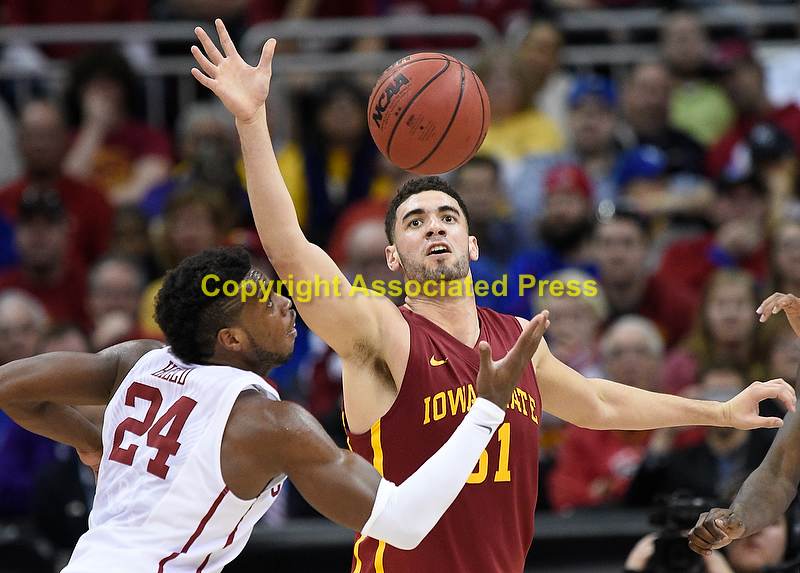
Taking a minute before the game to set a custom white balance can mean good color right out of the camera, like this. Nikon D4S, Manual, ISO 5000, 1/1250 at f/4, Nikkor 300mm f/2.8 lens with TC-14 teleconverter for 420mm. Photo copyright Reed Hoffmann, The Associated Press.
6 – Position – When covering college basketball, photographers are usually restricted to one side of the basket on each end of the court, sitting on the floor. That’s not a bad place to be (ref’s butts aside), as you’re close to the near basket and have a relatively clear view to the other end. When players dive for the ball, facing you, you’ve got a clean shot of their face. That also lets you see both benches, since the the action’s not always out on the floor. A nice change of position can be had by moving up into the stands, to shoot from above. But you’ll see fewer faces (unless rebounding), and you’ll also be further away (smaller image size).
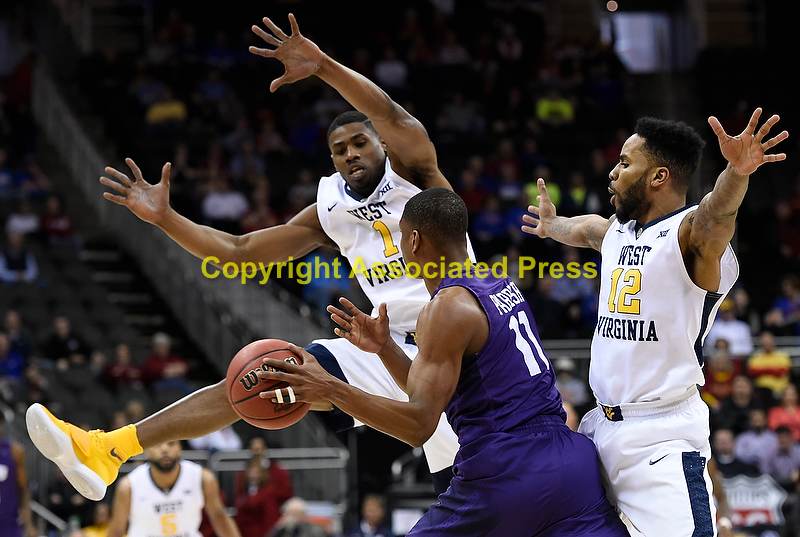
Being on the floor means you’re shooting up into the players faces, and hopefully a dark background too. Nikon D4S, Manual, ISO 4000, 1/1250 at f/4, Nikkor 70-200mm f/2.8 lens at f/4. Reed Hoffmann, The Associated Press.
7 – Emotion – The best sports photos have emotion. Which means faces and reactions. If you put your camera down as soon as the whistle blows, you’ll miss pictures. And those emotions and reactions happen off the court too, which is why you need to keep an eye on the benches and coaches.
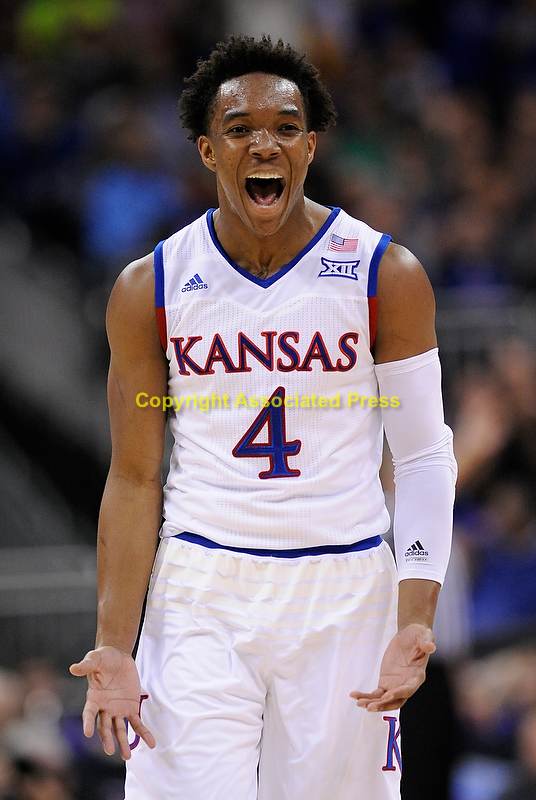
Some of the best photos are reactions of players after the action has ended. Nikon D3, Manual, ISO 3200, 1/1600 at f/2.8, Nikkor 300mm f/2.8 lens at 300mm. Photo copyright Reed Hoffmann, The Associated Press.
8 – Lens Choice – It’s tempting to think that all sports photography is done with telephoto lenses, but that’s not true. Wide-angles have a place too, though you won’t use them as much. For instance, when shooting basketball, if I get a position near the goal, I’ll always shoot a few wide shots which makes a different kind of picture, bringing the venue and crowd into the story. But those photos make it harder to see faces, which as we all know, are key to many of the best pictures.

Sometimes a wide shot is a nice change of pace. Nikon D3, Manual, ISO 3200, 1/1000 at f/3.5, Nikkor 24-70mm f/2.8 lens. Copyright Reed Hoffmann, The Associated Press.
9 – Cropping – Most sports action is unpredictable, so framing tight means you’ll often miss pictures. Better to shoot a little loose and crop in afterwards. That was one of the biggest challenges in the early days of digital. Our first cameras captured only 1.3 megapixels, and after a couple of years they moved up to all of 2.7. Which meant we had to shoot everything tight because we didn’t have enough resolution to crop in. Now we do, thank God. But there are limits to everything. You still need to shoot relatively tight. How tight? Most amateurs would be amazed how tight professional sports photographers shoot in camera. Me, I shoot looser because I cover sports less these days, and that helps me get more good photos because I catch moments I can crop in on later.
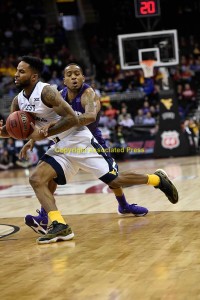
There’s an important moment happening here, if the image is cropped properly. Nikon D4S, Manual, ISO 4000, 1/1250 at f/4, Nikkor 70-200mm f/2.8 lens at 120mm. Photo copyright Reed Hoffmann, The Associated Press.
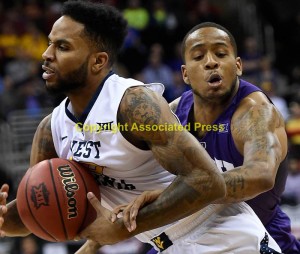
Cropped like this, you can see the foul happening. Nikon D4S, Manual, ISO 4000, 1/1250 at f/4, Nikkor 70-200mm f/2.8 lens at 120mm. Photo copyright Reed Hoffmann, The Associated Press.
10 – Knowledge of the Sport – If you don’t know how a game’s played, you’ll have a hard time anticipating what’s going to happen. And action photography is all about anticipation. If you push the shutter button when you see “the moment,” you’ll have missed it. You have to press just before. Many people think photographers push the button and let the camera fire away. That’s partly true. But good photographers try to anticipate the moment the action’s peaking, and press the shutter then. At that point, they may let the camera run, because they don’t know what might happen next. But they almost always try to time that first shot for “the moment.” And understanding the players, coaches and teams helps them better do that. Which is why some newspapers have photographers dedicated to certain teams. The better they know the team, the better pictures they can make.
Lastly, let’s not forget the role that luck plays in photography. Sometimes you get lucky, and you should be thankful when that happens. But the best photographers make their own luck by knowing their equipment and how to use it, and knowing the sport and participants. Those are the ones who always seem to be in the right place at the right time. When you reach that point, you can truly call yourself a sports photographer. Me, I’m still working on it, and you should be too. Good luck out there!

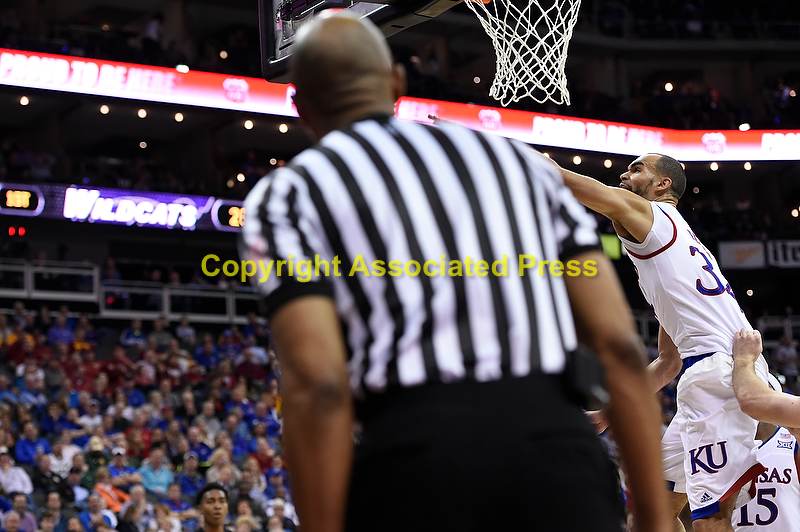
Trackbacks/Pingbacks